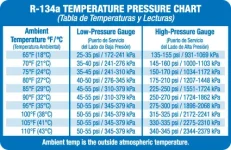Thanks. I was looking for this type of example. I think I’ll try fix all the leaks, then look at a new compressor.
Another possibility is low refrig. and air in system, when compressor cycles does the low side gauge rise and fall or is it stationary ? When compressor is real weak or on its way out is the low side gauge can sometimes not move.

